Do You Think You Could Show Us How You Color City Backgrounds? Ofc You Don’t Have To But They All Look
Do you think you could show us how you color city backgrounds? Ofc you don’t have to but they all look so amazing and it’s hard to find tutorials in styles like this (at least for me)
Sorry if I answer only now, but I’ve been pretty busy and still wanted to do it properly; I put together a pseudo-tutorial of my drawing method, hope it’s helpful and that the image is viewed clearly:

More Posts from Penguin-penguin-penguin and Others




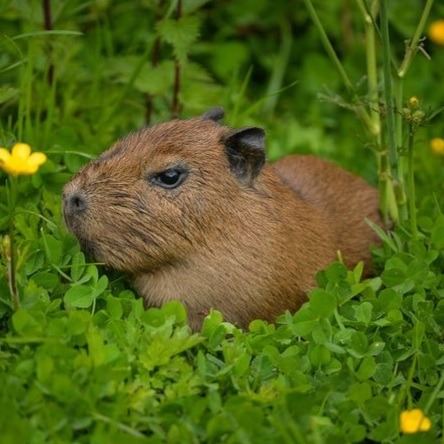




cabybabies :)


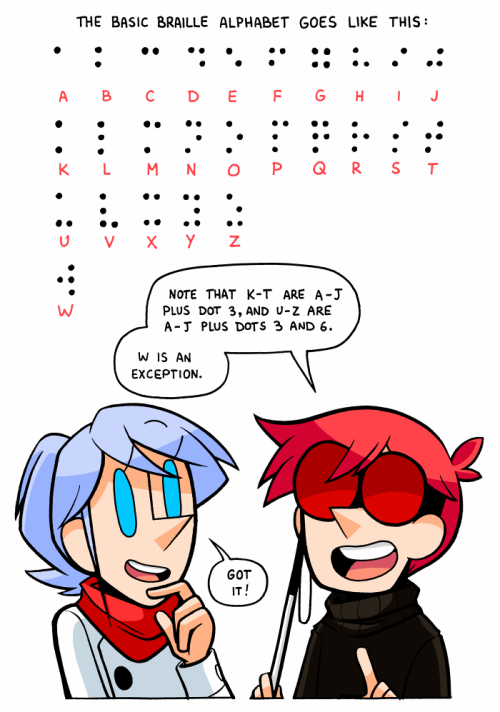
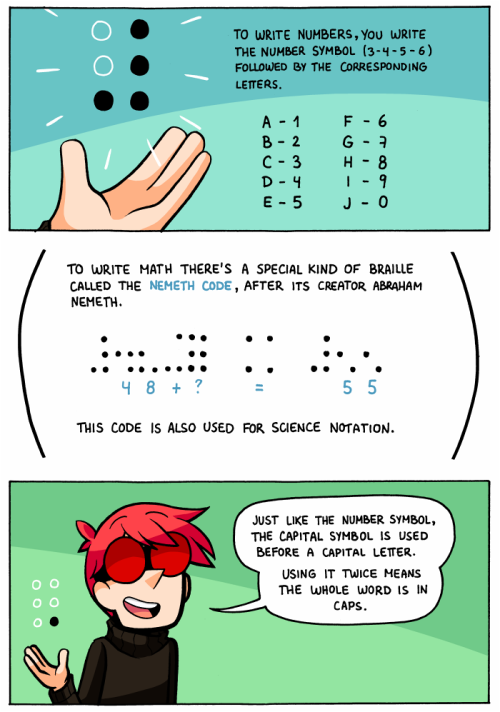
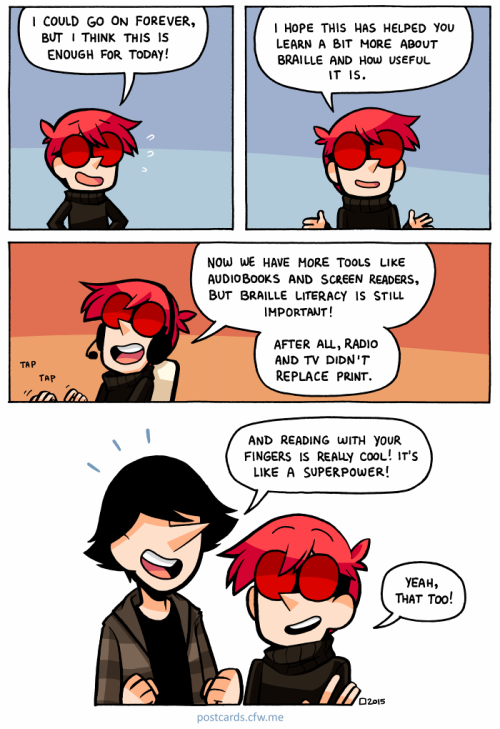
This is part of my webcomic Postcards in Braille, which you can read on ComicFury or Tapastic. Updates on Mondays!
This comic/guide works well enough on its own, so I thought it’d be nice to post it here as well :D Braille is really cool and you don’t need to be blind or visually impaired to learn it - and spreading the use of Braille can help us build a more inclusive society! everyone wins!
Bonus fun fact: Braille is originally based on Night writing (or sonography), a tactile reading/writing system created for soldiers to communicate silently at night. Louis Braille adapted it into easier to read cells, creating the Braille system. Good to know it evolved into something so useful!

I am more afraid of an army of 100 sheep led by a lion than an army of 100 lions led by a sheep. #lion #lions #wildlife #savelions
Toh sketch dump




Hello! Hope youre having a great day! I absolutely love how you draw clothing and how varied the layers and folds are, where do you usually take refs from? I havent found any good resources to reference from sadly, was wondering if you good help. Cheers!
there are like... two basic things to always keep in mind. or at least i keep them in mind...
cheat trick: draw the seams! its basically contour for your clothes. it gives more structure and detail by default. you can do like a simple line, or do like a striped line. or you go the extra mile to do a pattern stich.

Triangles Rule! clothes have a this habit of falling in triangles. like there is a Fix-point that holds the cloth and then it spreads out, usual in a triangular structure. depending how tight it is pulled the triangles get tighter, or wider when the garment is just draped draping over the body. how much into detail you want to do depends on each artist.
fix-points wher most the fold and details happens is usualy where we have our joints. elbow, knees, armpit ect.

my references are more for inspiration as to what the characters are wearing rather then how to draw the fold. though... i struggle lots with hoods but in that case i just google "hoods" and tada! dozen and dozen of references. thick hoods slim hoods. pulled up pulled down.

about layering clothing... i do in fact just... layer them? like i have my thumbs of course where its all like mixed toghether in one. but if i feel like it i take the time to go through each layer and to figure out how the clothing interact. or like... i can like this see the clothes underneath more clearly in case i need them? ha i make my own dress up dolls somehow hahah hm...

which is fun to me. because lets say it it suddenly hot or getting cold the character has some variation? uhm... i have more doodeled out. this are just few i have finished and... urgh one day i will continue figuring these guys out... anyway this was a lot. uhm... thanks for reading this far? hope this helped
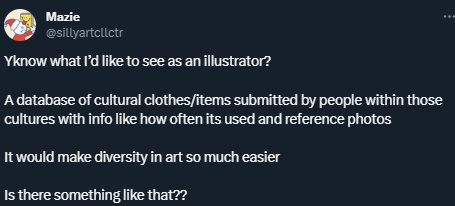
tweet
Something like this would be so colossally helpful. I'm sick and tired of trying to research specific clothing from any given culture and being met with either racist stereotypical costumes worn by yt people or ai generated garbage nonsense, and trying to be hyper specific with searches yields fuck all. Like I generally just cannot trust the legitimacy of most search results at this point. It's extremely frustrating. If there are good resources for this then they're buried deep under all the other bullshit, and idk where to start looking.





Art by Lydia Elaine
-
 perfusio liked this · 1 year ago
perfusio liked this · 1 year ago -
 mortallyjovialfox liked this · 1 year ago
mortallyjovialfox liked this · 1 year ago -
 dm-roman liked this · 1 year ago
dm-roman liked this · 1 year ago -
 madasahyacinth liked this · 1 year ago
madasahyacinth liked this · 1 year ago -
 nosebleed-inglishera liked this · 1 year ago
nosebleed-inglishera liked this · 1 year ago -
 rooples reblogged this · 2 years ago
rooples reblogged this · 2 years ago -
 primmy126 liked this · 2 years ago
primmy126 liked this · 2 years ago -
 huggingstuffiesandcrying liked this · 2 years ago
huggingstuffiesandcrying liked this · 2 years ago -
 shadowdragon108 liked this · 2 years ago
shadowdragon108 liked this · 2 years ago -
 zstacyi liked this · 2 years ago
zstacyi liked this · 2 years ago -
 faustouz liked this · 2 years ago
faustouz liked this · 2 years ago -
 jasmine-williams230 liked this · 2 years ago
jasmine-williams230 liked this · 2 years ago -
 martianapplecrumble liked this · 2 years ago
martianapplecrumble liked this · 2 years ago -
 roseofdarkness0 reblogged this · 2 years ago
roseofdarkness0 reblogged this · 2 years ago -
 roseofdarkness0 liked this · 2 years ago
roseofdarkness0 liked this · 2 years ago -
 lemonyinks reblogged this · 2 years ago
lemonyinks reblogged this · 2 years ago -
 lemonyinks liked this · 2 years ago
lemonyinks liked this · 2 years ago -
 blue15sposts liked this · 3 years ago
blue15sposts liked this · 3 years ago -
 homonoodles liked this · 3 years ago
homonoodles liked this · 3 years ago -
 alwoobles liked this · 3 years ago
alwoobles liked this · 3 years ago -
 dabookgoblin liked this · 3 years ago
dabookgoblin liked this · 3 years ago -
 generator-gadget reblogged this · 3 years ago
generator-gadget reblogged this · 3 years ago -
 generator-gadget liked this · 3 years ago
generator-gadget liked this · 3 years ago -
 lovelymidnightsky liked this · 3 years ago
lovelymidnightsky liked this · 3 years ago -
 ruby16san liked this · 3 years ago
ruby16san liked this · 3 years ago -
 thecheesecakeloveranonymous reblogged this · 3 years ago
thecheesecakeloveranonymous reblogged this · 3 years ago -
 thecheesecakeloveranonymous liked this · 3 years ago
thecheesecakeloveranonymous liked this · 3 years ago -
 oh-gh0st liked this · 3 years ago
oh-gh0st liked this · 3 years ago -
 rooples liked this · 3 years ago
rooples liked this · 3 years ago -
 the-jester-block reblogged this · 3 years ago
the-jester-block reblogged this · 3 years ago -
 the-jester-block liked this · 3 years ago
the-jester-block liked this · 3 years ago -
 shieldherostuffs liked this · 3 years ago
shieldherostuffs liked this · 3 years ago -
 expiredyogurts liked this · 3 years ago
expiredyogurts liked this · 3 years ago -
 whomturgled liked this · 3 years ago
whomturgled liked this · 3 years ago -
 junomachinery liked this · 3 years ago
junomachinery liked this · 3 years ago -
 cookiehoodie liked this · 3 years ago
cookiehoodie liked this · 3 years ago -
 l0v3lylune liked this · 3 years ago
l0v3lylune liked this · 3 years ago -
 janeghost18 liked this · 3 years ago
janeghost18 liked this · 3 years ago -
 waddieishere liked this · 3 years ago
waddieishere liked this · 3 years ago -
 catguardianillustrations liked this · 3 years ago
catguardianillustrations liked this · 3 years ago -
 unleashedphoenix reblogged this · 3 years ago
unleashedphoenix reblogged this · 3 years ago -
 cosmic-pheonix reblogged this · 3 years ago
cosmic-pheonix reblogged this · 3 years ago -
 cosmic-pheonix liked this · 3 years ago
cosmic-pheonix liked this · 3 years ago -
 fangirlingatstuff liked this · 3 years ago
fangirlingatstuff liked this · 3 years ago -
 greaser-chan reblogged this · 3 years ago
greaser-chan reblogged this · 3 years ago -
 i-eat-stickers liked this · 3 years ago
i-eat-stickers liked this · 3 years ago -
 luluililululu liked this · 3 years ago
luluililululu liked this · 3 years ago -
 necrxheart liked this · 3 years ago
necrxheart liked this · 3 years ago -
 nose-just-vibing liked this · 3 years ago
nose-just-vibing liked this · 3 years ago
Pemguins~ I'm sorry, but I do not have much money. I cannot afford to donate to anyone.
228 posts





